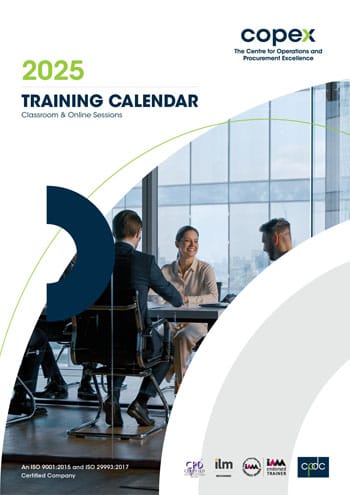
What is Facilities Management? Types and Essential Checklist
5 mins readIntroduction To Facilities Management
When exploring what is facilities management, it is important to understand that the discipline goes far beyond basic building upkeep. At its core, facilities management (FM) is the strategic integration of people, processes, and technology to ensure that built environments remain functional, safe, and efficient. The practice encompasses everything from maintaining infrastructure to enhancing the comfort and productivity of those who occupy the space.
A clear facilities management definition highlights its dual focus: supporting day-to-day operations while aligning facility services with broader business objectives. This means not only managing buildings and utilities but also driving initiatives in sustainability, compliance, and workplace optimization. By ensuring that systems and services operate seamlessly, facilities management creates the foundation on which organizations can grow and innovate.
The true facilities management meaning lies in its contribution to organizational success. Effective FM improves cost efficiency, supports compliance with health and safety regulations, and fosters sustainable practices that align with modern environmental goals. It also enhances employee satisfaction by creating safe, comfortable, and adaptable workplaces. In essence, facilities management is the bridge between physical infrastructure and strategic business outcomes—making it a critical function for organizations of all sizes.
Core Functions of Facilities Management
The facilities management functions cover a broad range of responsibilities designed to keep workplaces operational, safe, and efficient. These functions extend beyond routine maintenance and encompass the strategic planning required to align physical spaces with business objectives. By managing both the technical and service aspects of a facility, FM ensures that organizations can operate without disruptions while supporting employee well-being.
The scope of facilities management typically includes the following:
- Building maintenance and repairs – carrying out preventive and corrective maintenance to ensure reliability of essential systems such as HVAC, plumbing, and electrical infrastructure.
- Health, safety, and environmental compliance – enforcing workplace safety standards, conducting audits, and ensuring organizations meet all legal and regulatory requirements.
- Space planning and workplace optimization – managing layouts, office space allocation, and design to improve productivity and adapt to evolving workplace models.
- Utilities and energy management – monitoring energy use, reducing waste, and implementing sustainability strategies to cut costs and support environmental goals.
- Cleaning, catering, and support services – overseeing essential services that maintain comfort, hygiene, and functionality in the workplace.
Together, these core functions illustrate how facilities management acts as the backbone of organizational success. By combining operational reliability with strategic foresight, it enables businesses to create resilient and sustainable environments that foster both productivity and growth. Explore: Facilities & Asset Management Training Courses
Types of Facilities Management
Understanding the different types of facilities management helps organizations determine how best to manage their buildings, services, and resources. Facilities management can generally be divided into three main categories: hard FM, soft FM, and integrated FM, each addressing unique aspects of operations while collectively ensuring safety, comfort, and efficiency.
- Hard FM: This focuses on physical assets and infrastructure. It includes the maintenance of HVAC systems, plumbing, electrical networks, fire safety equipment, and structural elements of a building. For example, scheduling regular inspections of fire alarms or ensuring the HVAC system maintains indoor air quality are essential hard FM practices.
- Soft FM: Unlike hard services, soft FM deals with people-centered and support services that make workplaces functional and comfortable. This includes cleaning, catering, security, pest control, and waste management. A real-world example is managing daily cleaning services to maintain hygiene standards or organizing catering to support staff well-being.
- Integrated FM: This approach combines both hard and soft FM under a single management framework for greater efficiency and cost savings. For instance, outsourcing both building maintenance and support services to one provider allows for streamlined processes, reduced duplication, and improved accountability.
By distinguishing between these categories, organizations can adopt tailored strategies that align with their specific needs. Whether through targeted hard or soft FM services or by leveraging the benefits of integration, effective facilities management ensures buildings remain safe, sustainable, and employee-focused.
Top Facilities Management Training Courses
Facilities Management Checklist
To ensure smooth operations, every organization can benefit from a structured facilities management checklist. A comprehensive checklist helps facility managers stay proactive, reduce risks, and maintain compliance while creating a safe and productive environment. By organizing tasks into clear categories, FM teams can streamline operations and avoid costly disruptions.
An effective FM audit checklist typically includes the following items:
- Preventive maintenance schedules – planning and tracking regular inspections and servicing of HVAC, plumbing, electrical, and fire safety systems.
- Safety and compliance audits – conducting routine checks to ensure adherence to health, safety, and environmental regulations.
- Emergency preparedness plans – developing and updating evacuation procedures, fire drills, and crisis response strategies.
- Energy efficiency and sustainability practices – monitoring energy consumption, implementing eco-friendly technologies, and aligning with net zero initiatives.
- Vendor and contractor management – evaluating service providers, managing contracts, and ensuring accountability for outsourced tasks.
- Employee comfort and workplace services – overseeing cleaning, catering, ergonomic furniture, and temperature control to enhance productivity and satisfaction.
Creating a downloadable or printable facilities management checklist can serve as a practical tool for readers, enabling them to apply these best practices in their own organizations. Such resources not only make day-to-day operations more manageable but also ensure that all critical areas of facilities management are consistently addressed. Explore: Facilities Management Specialist Training
Importance of Facilities Management in Organizations
The importance of facilities management lies in its ability to connect people, spaces, and processes in a way that drives efficiency and long-term value. Far more than building maintenance, FM provides the foundation for safe, sustainable, and productive workplaces. By aligning facilities operations with organizational strategy, it directly contributes to both performance and resilience. Check: Complete Course on Facilities Management
Key benefits of FM include:
- Enhancing employee productivity and satisfaction – by creating clean, safe, and comfortable work environments that enable staff to perform at their best.
- Ensuring legal and safety compliance – through regular audits, inspections, and adherence to health, safety, and environmental regulations.
- Reducing operational costs through preventive maintenance – minimizing downtime, extending asset life cycles, and avoiding costly emergency repairs.
- Supporting sustainability and net zero goals – implementing energy efficiency initiatives, waste reduction programs, and green building practices to meet environmental commitments.
Ultimately, the role of facilities management extends beyond operational oversight. It ensures organizations can focus on growth and innovation while maintaining a strong foundation of compliance, safety, and efficiency. By prioritizing FM, businesses invest in the long-term well-being of their people, assets, and reputation.
FAQs on Facilities Management
To make the concept of facilities management more approachable, here are answers to some of the most common questions professionals and organizations ask. These facilities management FAQs provide simple, practical explanations:
-
What is facilities management in simple terms?
In simple terms, facilities management is about ensuring that buildings and workplaces operate smoothly, safely, and efficiently. It combines people, processes, and technology to support daily operations and long-term organizational goals.
-
What are the two main types of facilities management?
The two primary types of facilities management are:
- Hard FM, which deals with physical assets such as HVAC, plumbing, electrical systems, and building structures.
- Soft FM, which focuses on services like cleaning, catering, security, and waste management.
-
What should a facilities management checklist include?
A strong facilities management checklist (or FM audit checklist) should include preventive maintenance schedules, safety audits, energy efficiency measures, emergency preparedness plans, and vendor management. It may also cover employee comfort services like cleaning, catering, and workspace design.
-
Why is facilities management important for businesses?
The importance of facilities management lies in its ability to reduce costs, ensure compliance with safety laws, and support sustainability initiatives. It also enhances employee productivity and satisfaction by creating safe, efficient, and comfortable workplaces.
Conclusion
Understanding what is facilities management is essential for any organization aiming to operate smoothly, safely, and sustainably. Facilities management is not just about maintaining buildings—it is about creating environments where people can thrive, processes can flow efficiently, and businesses can grow without disruption.
To achieve this, organizations should adopt structured FM practices supported by tools like a facilities management checklist. Such checklists help ensure that preventive maintenance, safety compliance, energy efficiency, and employee comfort are consistently prioritized. By taking a proactive approach, businesses can reduce risks, cut unnecessary costs, and strengthen long-term resilience.
In today’s fast-paced business world, investing in effective facilities management is investing in organizational success. Companies that empower their FM teams with the right strategies and resources will not only safeguard their assets but also enhance productivity, sustainability, and overall performance.
Must Visit
Leadership Training Courses – Training Courses in Dubai – Training Courses in London





